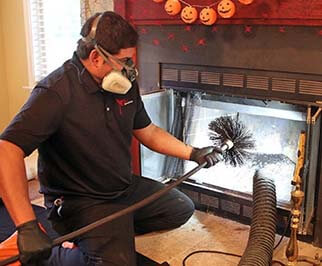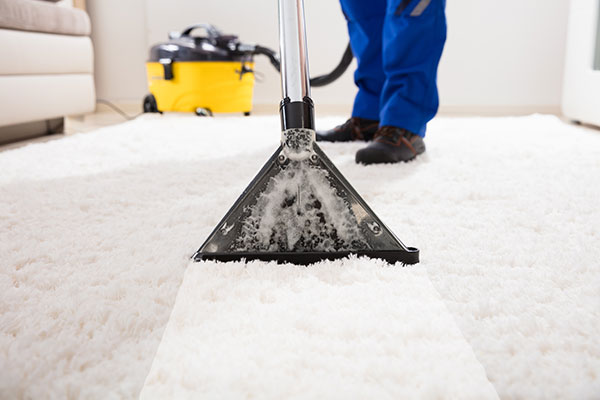Breathe Easy: The Ultimate Guide to Chimney Cleaning for a Safer, Warmer HomeBreathe Easy: The Ultimate Guide to Chimney Cleaning for a Safer, Warmer Home

Why Chimney Cleaning Should Be a Priority
A clean chimney isn’t just about keeping your fireplace running smoothly—it’s a critical part of home safety. Every time you burn wood, especially unseasoned or softwood, it releases smoke filled with fine particles and gases. As this smoke rises through the cooler chimney, it condenses and forms creosote, a sticky, tar-like substance that clings to the interior walls of your flue. Creosote is not only stubborn and difficult to remove, but also highly flammable. When it builds up in thick layers, even a small spark or high heat from a fire can ignite it, leading to a dangerous chimney fire that can spread quickly to other parts of your home. Ignoring chimney maintenance doesn’t just reduce your fireplace’s performance—it puts your entire household at risk. To reduce the risk of fire, make sure your
is performed at least once a year.
Regular chimney cleaning:
- Prevents chimney fires
- Improves air quality
- Enhances the performance of your fireplace or wood stove
- Keeps harmful gases like carbon monoxide out of your living space
And it’s not just creosote. Leaves, animal nests, and soot can block airflow and create serious ventilation problems. A well-maintained chimney is your first defense against smoke and toxic gas buildup.
Must-Have Tools for DIY Chimney Cleaning
Before you start, gather the right gear. Here’s your essential chimney cleaning toolkit:
- Chimney brush (matched to your flue size and shape)
- Extension rods (compatible with your brush)
- Drop cloths/plastic sheeting (to protect flooring and furnishings)
- Duct tape (for sealing the fireplace opening)
- Shop vacuum (to remove debris and ash)
- Ladder (roof access if using the top-down method)
- Safety gear (goggles, gloves, dust mask)
Having the right tools ensures a safer, cleaner, and more effective job.
Step-by-Step Chimney Cleaning Made Simple
1. Prep Like a Pro
Set yourself up for success:
- Measure the height and shape of your chimney
- Select the correct brush and rods
- Lay down protective coverings
- Seal the fireplace opening
- Gear up with safety equipment
2. Scrub It Out: Top-Down or Bottom-Up?
Two tried-and-true methods—pick the one that suits you best:
Top-Down Method
- Climb to the roof safely
- Remove chimney cap
- Insert brush and scrub with steady up-and-down strokes
- Add rods as you go until you reach the bottom
Bottom-Up Method
- Stay indoors
- Insert the brush through the fireplace
- Scrub upward, extending rods as needed
- Stop when the brush reaches the top
Tip: The top-down method tends to be more thorough, but the bottom-up method is safer if you’re not comfortable on a roof. A professional
can detect structural issues that most homeowners would miss.
Finishing Touches and Cleanup
After scrubbing:
- Let the dust settle
- Carefully remove the plastic sheeting
- Vacuum up debris
- Reattach the chimney cap (if removed)
- Dispose of creosote and ash responsibly (check your local regulations)
Bonus Tips for Chimney Cleaning Success
- Clean your chimney once a year, ideally before peak fireplace season
- Burn only seasoned hardwood to reduce creosote buildup
- Inspect for cracks or damage during each cleaning
- Install a chimney cap or mesh screen to keep critters out
- Add a carbon monoxide detector in your home for added peace of mind
When to Call a Chimney Cleaning Pro
Sometimes, DIY isn’t enough. Call a certified chimney sweep if:
- You see thick creosote or a tar-like glaze
- It’s been over a year since the last cleaning
- You’re not comfortable on a roof or handling tools
- You suspect chimney damage
Pros have the tools and training to catch issues you might miss—and they’ll give your chimney a clean bill of health. Keeping up with
is one of the simplest ways to prevent costly chimney repairs.
FAQ: Chimney Cleaning
How often should chimneys be cleaned?
At least once a year, or more if you use your fireplace regularly.
Is chimney cleaning messy?
It can be—but with proper prep, it’s manageable.
Can I clean my chimney from indoors?
Yes, the bottom-up method lets you clean without going on the roof.
What happens if I skip cleaning?
Skipping chimney cleaning increases the risk of fire, poor ventilation, and CO poisoning.
How much does professional cleaning cost?
Between $100–$300, depending on your area and chimney condition.
Chimney Cleaning Checklist
Use this to stay on track:
✅ Gather tools and safety gear
✅ Measure chimney height and shape
✅ Choose top-down or bottom-up method
✅ Protect your floors and seal the fireplace
✅ Scrub the flue thoroughly
✅ Clean firebox and surrounding area
✅ Inspect for damage or blockages
✅ Reattach chimney cap
✅ Dispose of creosote and debris safely
✅ Schedule next annual cleaning
